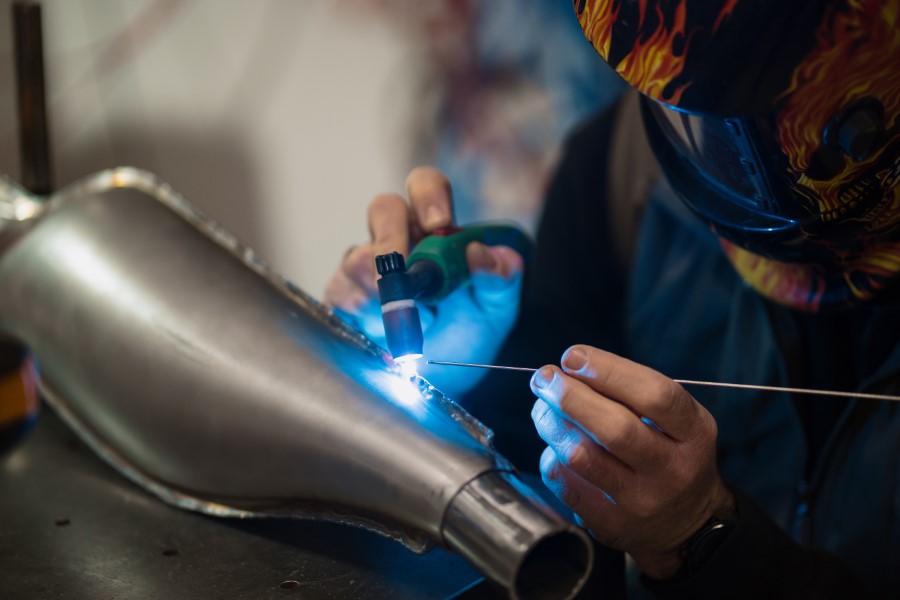Stainless steel is renowned for its strength, corrosion resistance, and aesthetic appeal, making it a popular choice in various industries, from construction to cookware. Welding stainless steel, however, poses unique challenges due to its properties. This guide will provide essential tips and techniques to help you achieve successful welds on stainless steel, whether you’re a novice or an experienced welder.
Understanding Stainless Steel
Before diving into the welding process, it’s important to understand the basics of stainless steel. This alloy primarily consists of iron, chromium, nickel, and other elements. The chromium content (at least 10.5%) forms a passive layer of chromium oxide on the surface, which prevents rust and corrosion. There are several grades and types of stainless steel, but the most common for welding are austenitic (e.g., 304, 316), ferritic, and martensitic stainless steels.
Preparing for Welding
Proper preparation is crucial for successful stainless steel welding. Here are the key steps:
- Cleaning the Metal:
- Remove Contaminants: Stainless steel surfaces must be clean and free from oil, grease, dirt, and other contaminants. Use a degreaser and a clean cloth to wipe the surface.
- Remove Oxides: Stainless steel may have a thin oxide layer that needs to be removed. Use a stainless steel wire brush or abrasive to clean the weld area.
- Gezamenlijke voorbereiding:
- Pasvorm: Ensure that the parts to be welded fit together tightly with minimal gaps. Poor fit-up can lead to defects and weak welds.
- Edge Preparation: For thicker materials, bevel the edges to allow for proper penetration and a stronger weld.
- Choose the Right Filler Material:
- Use a filler material that matches the base metal composition to maintain corrosion resistance and mechanical properties. For example, use 308L filler for welding 304 stainless steel and 316L filler for 316 stainless steel.
Lastechnieken
Several welding techniques are suitable for stainless steel. The choice of technique depends on the application, material thickness, and desired weld quality. Here are the most common methods:
- TIG Welding (GTAW):
- Precisie en controle: TIG welding offers excellent control and precision, making it ideal for thin stainless steel sheets and critical applications.
- Argon Shielding Gas: Use pure argon or an argon-helium mix to shield the weld area from contamination.
- Tungsten Electrode: Use a thoriated or ceriated tungsten electrode for stable arc and better control.
- MIG Welding (GMAW):
- Snelheid en efficiëntie: MIG welding is suitable for thicker materials and offers higher welding speeds compared to TIG.
- Afschermingsgas: Use a mixture of argon with 2-5% CO2 or an argon-helium mix to protect the weld.
- Draadaanvoer: Maintain a consistent wire feed speed and ensure proper contact tip distance for stable welds.
- Stick Welding (SMAW):
- Veelzijdigheid: Stick welding can be used for stainless steel, especially in outdoor or field conditions.
- Electrodes: Use stainless steel electrodes (e.g., E308L-16, E316L-16) for appropriate base metal compatibility.
- Slag Removal: Be diligent in removing slag after each pass to ensure weld quality.
Welding Process and Parameters
- Set the Correct Amperage:
- The amperage setting depends on the thickness of the stainless steel and the welding process. Too high or too low amperage can cause defects. For example, 20-40 amps are suitable for thin sheets with TIG, while thicker materials may require higher settings.
- Control Heat Input:
- Stainless steel is sensitive to heat input, which can lead to warping, distortion, and loss of corrosion resistance. Use techniques like back-stepping and intermittent welding to control heat input.
- Use Backing Gas:
- For high-quality welds, especially in TIG welding, use a backing gas like argon to shield the backside of the weld. This prevents oxidation and ensures a clean weld.
- Travel Speed and Technique:
- Maintain a steady travel speed to ensure even heat distribution and penetration. For MIG and TIG, use a push technique to keep the weld pool visible and control contamination.
- Post-Weld Cleaning:
- Remove any discoloration and oxide layers formed during welding using a stainless steel wire brush or pickling paste. This step is crucial to restore the stainless steel’s corrosion resistance.
Common Challenges and Solutions
- Vervorming:
- Challenge: Stainless steel has a high coefficient of thermal expansion, leading to distortion.
- Oplossing: Control heat input, use proper clamping, and apply tack welds to minimize movement.
- Kraken:
- Challenge: Cracking can occur due to improper cooling rates and stress.
- Oplossing: Preheat thicker sections to 150-200°F (65-93°C) and allow gradual cooling. Avoid rapid cooling or quenching.
- Corrosion:
- Challenge: Improper welding can reduce the corrosion resistance of stainless steel.
- Oplossing: Use appropriate filler materials, control heat input, and ensure post-weld cleaning to remove oxides and contaminants.
Conclusie
Welding stainless steel requires careful preparation, the right techniques, and an understanding of the material’s unique properties. Whether using TIG, MIG, or Stick welding, the key to successful welds lies in controlling heat input, maintaining cleanliness, and using appropriate filler materials. By following these tips and techniques, you can achieve strong, high-quality welds that retain the desirable properties of stainless steel. With practice and attention to detail, welding stainless steel can be mastered, opening up a wide range of possibilities for your projects and applications.

